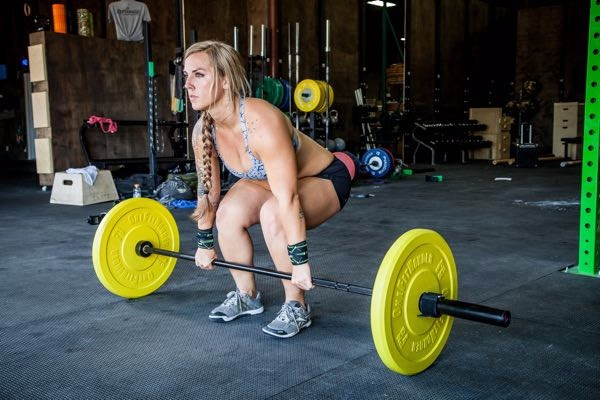Today I'm talking technique plates- what they are and why you use them (and how they differ from bumpers). Plus, I'll give you a little tip for cheap DIY plates.
Also, we just got a limited quantity of 10# technique plates with very light competition use- and you can buy them here.
And BTW, that pic at the top links to our tech plates, but those are bumpers in the photo. I just don't have a cool photo for the tech plates ;0
What are technique plates?
Tech plates are the predecessors to bumper plates. Before the technology and engineering existed to make high quality (light) weight plates from rubber (bumper plates), tech plates were the answer to hold a barbell at proper IWF height to start your first pull for the clean or snatch (or the deadlift for that matter).So, tech plates are weight plates constructed of plastic that have a 17-18" diameter (there is a bit of variation between brands). They typically are not made in weights higher than 25#/10kg- in fact, we have never been asked for tech plates in weights higher than 10#/5kg.
While they absorb the impact of a drop, they don't bounce like bumpers do- and they tend to be loud on the drop. Durability of tech plates is a strong point, but don't believe anyone who claims they're unbreakable. I've seen them break- although it takes quite a few (thousand) drops.
Why use tech plates?
There are two reasons in my mind:- You have a novice lifter and you want to lightly load the barbell, but still have the lifter learn the proper position to start the bottom of their lifts. The 5# tech plates are great for this.
- You don't trust 10# bumper plates (for durability). We run across this now and then. Honestly, I suggest our OneFitWonder 10# bumpers to people who think this way. The bumpers are less expensive, and a better option overall. And durability in bumpers has changed vastly from 2005-ish to now.
When to use tech plates and when to use bumpers
This one's easy.If you want to load a bar as light as possible, but still have a lifter start their pull from the correct height, use 5# tech plates.
In every other situation, use bumper plates.
Tech plates are more expensive than bumpers, they are louder when the bar is dropped, and with today's top notch bumper plates (ahem, OneFitWonder), the durability gap is way smaller than before.
A DIY plate tip
If you need to "fake" technique plates on a budget, check out your local home improvement store. You can find wood rounds there with an 18" diameter. Cut a 2" center, and you have a tech plate on a budget.
Be well,
PK


